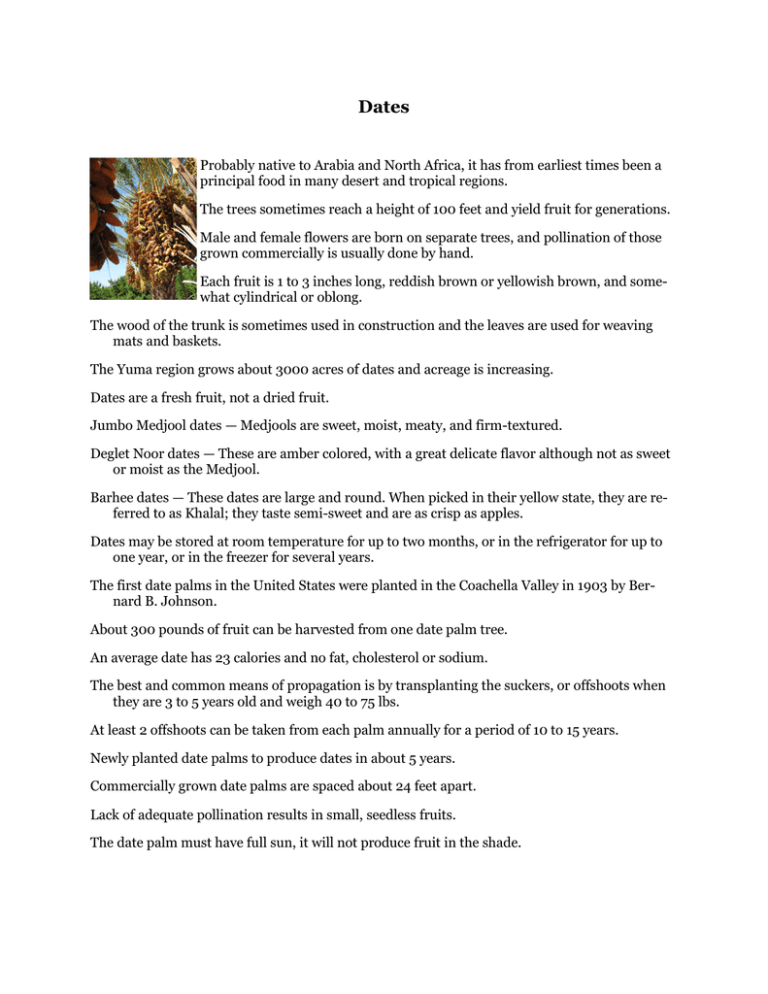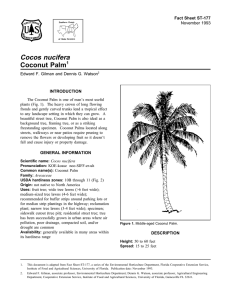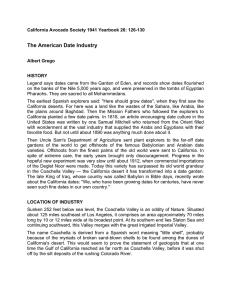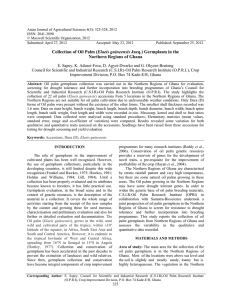Dates
advertisement

Dates Probably native to Arabia and North Africa, it has from earliest times been a principal food in many desert and tropical regions. The trees sometimes reach a height of 100 feet and yield fruit for generations. Male and female flowers are born on separate trees, and pollination of those grown commercially is usually done by hand. Each fruit is 1 to 3 inches long, reddish brown or yellowish brown, and somewhat cylindrical or oblong. The wood of the trunk is sometimes used in construction and the leaves are used for weaving mats and baskets. The Yuma region grows about 3000 acres of dates and acreage is increasing. Dates are a fresh fruit, not a dried fruit. Jumbo Medjool dates — Medjools are sweet, moist, meaty, and firm-textured. Deglet Noor dates — These are amber colored, with a great delicate flavor although not as sweet or moist as the Medjool. Barhee dates — These dates are large and round. When picked in their yellow state, they are referred to as Khalal; they taste semi-sweet and are as crisp as apples. Dates may be stored at room temperature for up to two months, or in the refrigerator for up to one year, or in the freezer for several years. The first date palms in the United States were planted in the Coachella Valley in 1903 by Bernard B. Johnson. About 300 pounds of fruit can be harvested from one date palm tree. An average date has 23 calories and no fat, cholesterol or sodium. The best and common means of propagation is by transplanting the suckers, or offshoots when they are 3 to 5 years old and weigh 40 to 75 lbs. At least 2 offshoots can be taken from each palm annually for a period of 10 to 15 years. Newly planted date palms to produce dates in about 5 years. Commercially grown date palms are spaced about 24 feet apart. Lack of adequate pollination results in small, seedless fruits. The date palm must have full sun, it will not produce fruit in the shade. Commercial fruit production is possible only where there is a long, hot growing season with daily maximum temperatures of 90°F and virtually no rain—less than 1/2 inch during the fall ripening season. The date can tolerate long periods of drought though, for heavy bearing, it has a high water requirement. The date palm thrives in sand, sandy loam, clay and other heavy soils. It needs good drainage and aeration. A moderate degree of salinity is not harmful but excessive salt will stunt growth and lower the quality of the fruit. Optimum density is considered to be 50 trees per acre, about the standard in the Yuma. Planting may be done at any time of year, but most often takes place in spring or fall. The replanted offshoots begin to bloom in 3 years and fruit a year later but a substantial crop is not possible before the 5th or 6th year. In 8 or 10 years, the date will attain full production and it will keep on for a century though productivity declines after 60 to 80 years and also the flowers will be too high to pollinate and the fruits too high to pick. The palm grows at the rate of 1 to 1.5 feet a year and can reach 20 feet in 15 to 20 years depending on the cultivar and soil and water conditions. High humidity and rain during fruit development will cause minute cracks (checking), beginning at the apex of the fruit which ultimately darkens. The fruit clusters are covered with paper bags to shelter them from rain, dust, and predators. Ordinarily, in palms 5 to 8 years old, the first crop will be up to 22 lbs per palm; at 13 years, up to 176 lbs. In the Yuma area, dates ripen from late September through December; there are 6 to 8 pickings per palm. Dry or soft dates are eaten out-of-hand, or may be seeded and stuffed, or chopped and used in a great variety of ways: on cereal, in pudding, bread, cakes, cookies, ice cream, or candy bars. Kurt Nolte is an area agriculture agent with the Yuma County Cooperative Extension. He can be reached at 928-726-3904.










